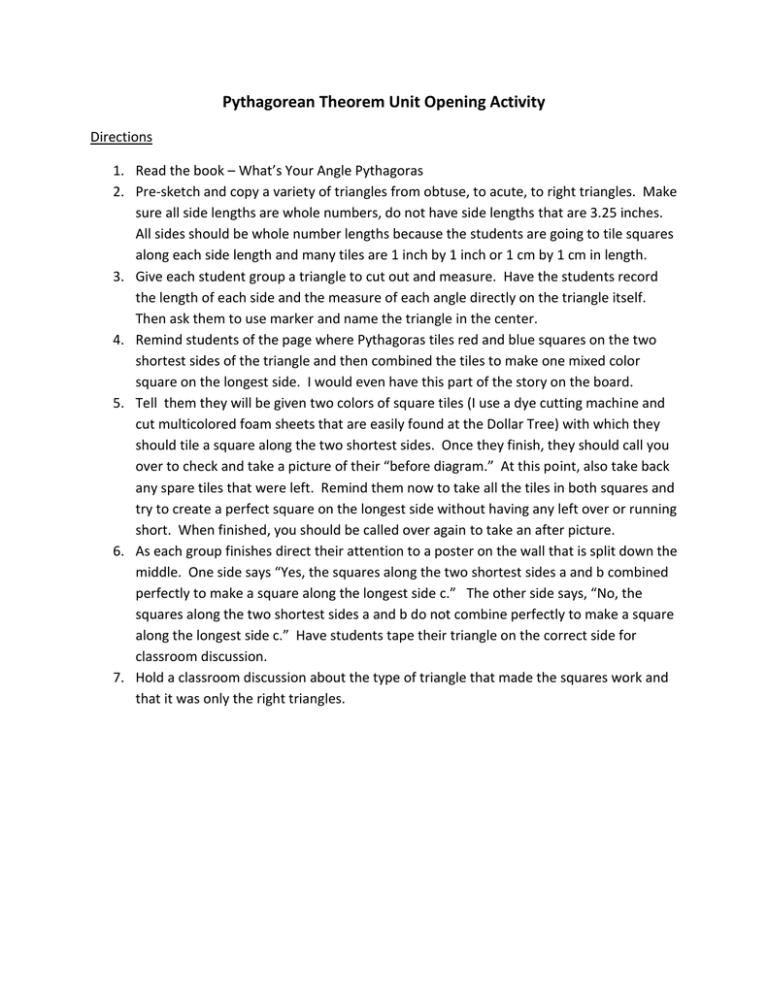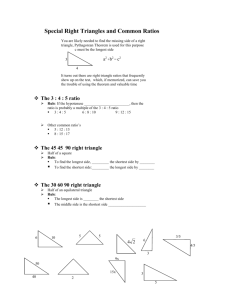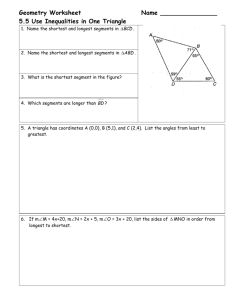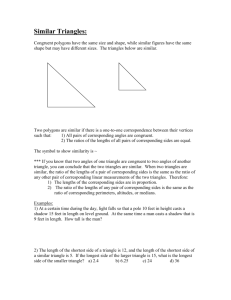Pythagorean Theorem Unit Opening Activity
advertisement

Pythagorean Theorem Unit Opening Activity Directions 1. Read the book – What’s Your Angle Pythagoras 2. Pre-sketch and copy a variety of triangles from obtuse, to acute, to right triangles. Make sure all side lengths are whole numbers, do not have side lengths that are 3.25 inches. All sides should be whole number lengths because the students are going to tile squares along each side length and many tiles are 1 inch by 1 inch or 1 cm by 1 cm in length. 3. Give each student group a triangle to cut out and measure. Have the students record the length of each side and the measure of each angle directly on the triangle itself. Then ask them to use marker and name the triangle in the center. 4. Remind students of the page where Pythagoras tiles red and blue squares on the two shortest sides of the triangle and then combined the tiles to make one mixed color square on the longest side. I would even have this part of the story on the board. 5. Tell them they will be given two colors of square tiles (I use a dye cutting machine and cut multicolored foam sheets that are easily found at the Dollar Tree) with which they should tile a square along the two shortest sides. Once they finish, they should call you over to check and take a picture of their “before diagram.” At this point, also take back any spare tiles that were left. Remind them now to take all the tiles in both squares and try to create a perfect square on the longest side without having any left over or running short. When finished, you should be called over again to take an after picture. 6. As each group finishes direct their attention to a poster on the wall that is split down the middle. One side says “Yes, the squares along the two shortest sides a and b combined perfectly to make a square along the longest side c.” The other side says, “No, the squares along the two shortest sides a and b do not combine perfectly to make a square along the longest side c.” Have students tape their triangle on the correct side for classroom discussion. 7. Hold a classroom discussion about the type of triangle that made the squares work and that it was only the right triangles. 8. If you post the pictures to a website you can also hold a classroom discussion about the other triangles. The acute triangles will always tile a square on the longest side and have a pile of extra tiles left over because the two shortest sides squared are always greater than the longest side squared. The obtuse triangles will never have enough to make a square on the longest side because the sum of the square of the two shortest sides is always less than the square of the longest side. This discussion brings up classifying triangles by the Pythagorean Thm. If a2 + b2 = c2 then right triangle If a2 + b2 > c2 then acute triangle If a2 + b2 < c2 then obtuse triangle Below are some example pictures from my classroom



